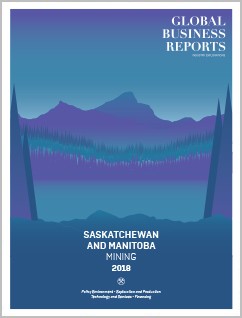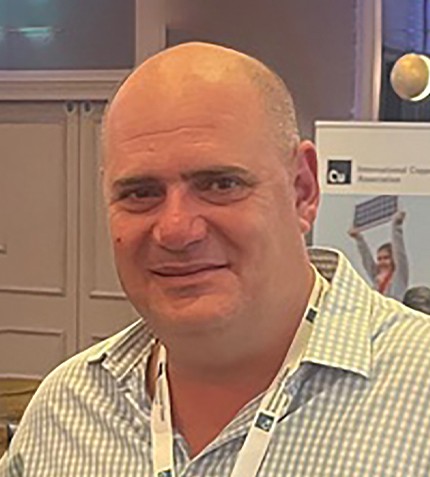
"The previous company was too aggressive in their development plan. They went underground on limited drilling meaning they had not defined the resource in detail so it was difficult for the mining engineers to develop a thorough plan. Also, the targeted throughput rate of 1,000 mt/d was too high for the size of the deposit."
RELATED PUBLICATION
ARTICLES FROM THIS PUBLICATION
- Saskatchewan’s Mining Industry: Converting Potential into Success
- Building Foundations: Manitoba’s Mining Renaissance
- Advancing Uranium Exploration in Saskatchewan: Preparing for an Upturn
- Manitoba’s Exploration Potential
- Technology and Services in Manitoba and Saskatchewan: A Conservative Industry Embracing Change
Gorden Glenn
CHAIRMAN, PRESIDENT AND CEO, MINNOVA CORP.
Minnova completed a feasibility study in November 2017 on its PL gold mine in central Manitoba. What were its main findings?
Due to the feasibility study, for the first time since the mine was developed it is now at reserve level. We have done a lot of drilling to have a higher confidence in our reserve and resource base. It is a very comprehensive technical study and is NI43-101 compliant. The project is very robust with a high IRR of over 50% and relatively low capex of approximately C$35 million. This contributes to a very short payback of approximately 1.5 years. The capex is low because we have a 1,000 mt/d mill that is in very good condition considering it has not been used for 30 years. Once up and running, the project will produce around 50,000 oz/y and we foresee up to 70,000 oz/y with the expansion potential.
Could you tell us more about the results of your drilling program in the summer of 2017?
It was the most significant drilling campaign at the project in the last 30 years. We drilled about 50 holes and 25 of them came back with exceptional ore grade. Building on this, we also did a lot of surface exploration and identified five showings over the course of the summer, many of which were on-trend from the existing deposit and in the shadow of the mill. Some also opened up new mineralization in the footwall tonalite, suggesting the potential for a new deposit type.
How good is the infrastructure surrounding the PL gold mine?
Local and regional infrastructure is excellent. Being in the Flin Flon-Snow Lake greenstone belt, we are in one of the premier mining districts in Canada that has a mining history of about 100 years. This means we have access to the skilled workforce we need and the lowest power costs in Canada. As the mine was previously in production, it has road access and significant infrastructure onsite such as the mill and underground facilities.
What lessons have been learnt from the performance of the original mine in the 1980s?
The previous company was too aggressive in their development plan. They went underground on limited drilling meaning they had not defined the resource in detail so it was difficult for the mining engineers to develop a thorough plan. Also, the targeted throughput rate of 1,000 mt/d was too high for the size of the deposit. Our challenge and opportunity is to acknowledge these failures and do more work to de-risk the project.
Why has there been relatively little exploration of precious metals in central Manitoba?
It is because the original discoveries, such as the Flin Flon deposit, were base metals and they were very large. Also, the Flin Flon-Snow Lake greenstone belt was controlled by Hudson Bay Mining & Smelting for almost 100 years. In the 1930s, they built a big copper smelter and zinc refinery so all of their efforts were focused on finding more base metals to feed their mill. Just three gold mines have been developed in the area: New Britannia, Puffy Lake and Tartan, plus a few advanced showings. Nobody was looking at gold for a long time but we took this up.
What is the timeline for developing the PL gold mine?
We are looking at how to structure the financing but the goal is to get up and running as soon as possible. If we reach our funding target of C$35 million we will be able to operate in approximately 18 months. Despite having significant infrastructure and permits already in place, there are still factors outside of our complete control, such as timing of funding and ongoing community engagement. We are waiting for the market to continue to improve. One challenge is that investors are looking for big projects and the PL gold mine, despite being an excellent deposit, is smaller than what they are typically looking for. Given this and with the current trend towards consolidation, we would also consider acquisition or merger opportunities.











